
David Snow entrevista a Cate Ambrose y Arturo Saval
This entry was posted in Capital Privado and tagged amexcap, Capital Privado, lavca, Private equity. Bookmark the permalink.
David Snow de Privcap entrevista a Cate Ambrose, directora ejecutiva de Lavca y a Arturo Saval, socio de Nexxus Capital y presidente de Amexcap sobre la oportunidad del mercado de capital privado en México.
La economía mexicana es grande y está creciendo, sin embargo, la penetración del capital privado ha sido –en el mejor de los casos—modesta, sobre todo en comparación con Brasil, que representa el mercado de capital privado más grande de Latinoamérica.
De acuerdo con los entrevistados, las perspectivas del Mercado mexicano son muy promisorias y existen oportunidades muy atractivas que pueden ser capitalizadas por equipos con talento y experiencia. En la entrevista se discuten temas como:
- el entorno macroeconómico
- la importancia creciente del consumidor mexicano
- el contexto latinoamericano
- la importancia de las ligas económicas y culturales al mercado de los Estados Unidos
- las percepciones equivocadas de muchos inversionistas extranjeros sobre el mercado mexicano
- la creciente participación de las Afores en inversiones de capital privado
- oportunidades de salida
Vale la pena ver el video de la entrevista con Arturo Saval y Cate Ambrose. A continuación presentamos una transcripción.
TRANSCRIPT
The following is the transcript from the video program, “Private Equity in Mexico.”
View the full video here
View the participant bios hereDavid Snow, Privcap: Today’s program, we are joined by Arturo Saval of Nexxus Capital and Cate Ambrose of the Latin American Venture Capital Association, or LAVCA. Cate and Arturo, thank you for joining Privcap today. Welcome.
Arturo Saval, Nexxus Capital: Thank you.
Cate Ambrose, LAVCA: Thanks for having us.
Snow: We’re talking about Mexican private equity today. It’s a very hot topic. Investors have an increasing appetite to understand what is happening in Mexico. Luckily, we have someone on the front lines and who has been on the front lines of the Mexican private equity industry for a long time.
Not only are you a co-founder of one of Mexico’s most established private equity firms, Nexxus Capital, but you’re also currently the chairman of AMEXCAP, which is a Mexican private equity association. I’m fascinated to hear about what’s going on in Mexico.
Of course, Cate, you are in charge of LAVCA, which not only has an understanding of Mexico, but is able to compare its progress and its trends across the Latin American private equity scene. So it’s great to have you here, as well.
Why don’t we start with sort of a thousand foot view of what is going on in Mexico. Arturo, what are the most important macroeconomic trends for investors to understand as they try to get a sense of what’s going on in Mexico from a private equity perspective?
Saval: Glad to. Well, as we have all seen in the last years, Mexico, and the region in general, has weathered the crisis pretty well that we have had in Europe and in the U.S., as well. In particular, Mexico has weathered it rather well because, regardless of its linkage to the U.S. economy, domestic consumption has risen pretty well.
When Nexxus Capital started making private equity back in ’98, the per cap revenue of a Mexican household was $3,500. Now it’s close to $11,000, so it has tripled in 12 years. That’s first. Second, the domestic economy is pretty strong because of a couple things. The first one is that Mexico is a rather young country. The average population is less than 25 years old.
The second thing, as opposed to the U.S. and Europe, this is a pretty unleveraged economy; just around 12 or 13 percent of the households actually do have a mortgage on their homes. Traditionally, thereby, the leverage that this family has from either mortgage or credit cards or any other type of debt is pretty low. That has allowed for the, what we call disposable income, to grow. Thereby, we tap it. And we believe there is a huge opportunity in Mexico in terms of the services sector, in particular.
Snow: Cate, as you look across the Latin American private equity market – obviously, it’s never been more popular, a lot of attention is being focused on Latin America – but what stands out in the Mexican private equity market as being particularly interesting right now?
Ambrose: I think Arturo touched on one of the critical issues, which is lack of leverage, in general, in the market and the expansion of consumer credit. We see that across Latin America, in a number of the different main economies, driving retail consumption, credit cards, and financial services for consumers getting in the mortgage market.
In Mexico, you also have, again, a particularly stable environment and lower interest rates and inflation than several of the other markets. So if you look across Latin America, you see countries like, for example, Colombia or Brazil, maybe even Peru, that are perceived as being very high-growth, but also potentially somewhat hot right now. I think Mexico is perceived as being someplace for stable, long-term growth.
One of the other important trends, as well, is just the integration of Latin American markets. We see markets like Chile, Peru, and Columbia building portfolio companies and looking to invest across those markets, and I’ve seen Mexico become part of that trend, as well. So I see more regional private equity firms looking at opportunities to build portfolio companies or to open offices in Mexico as a complement for doing deals across the region.
Snow: So, Cate, it’s not just that the Mexican private equity opportunity is within Mexico. The ties to the U.S. market are also very important. What is an important thing for people to understand about the U.S./Mexican tie that touches on the Mexican private equity opportunity?
Ambrose: Of course, Mexico, separate from the fact that only had a downturn in the U.S. – I mean, the U.S. and Europe are seen as the lower-growth opportunities in global private equity right now, so there’s been a lot of attention focused on Latin America. And in some ways, Mexico has suffered by being more closely integrated with the U.S. economy.
But within the U.S. economy, one of the strong growth areas is precisely the Hispanic population and consumption in that market. There have been headlines over the course of the last year or so that the growth of the Hispanic population in the U.S. was projected to be quite fast, and it’s been even more dramatic than projected initially.
So the opportunity to sell to a population of young people that are moving back and forth between the U.S. and Mexico in areas of, again, domestic consumption, consumer products, financial services, remittances is an enormous area of capital flowing back and forth across the border, is definitely something that has been a positive for the Mexican market.
Snow: Then a question for both of you: Mexico is also becoming an important place as far as the Pan-Latin American opportunity. Arturo, what are you seeing by way of ties to other Latin American countries that affect the way that one can invest in Mexico?
Saval: Actually, the total volume of trade that Mexico does with other countries is 80 percent U.S. and Canada. They have 20 percent for the rest of the world. We, at Nexxus Capital, do invest in companies based in Mexico. That doesn’t mean that we do not invest in both through these companies.
For instance, there is this company we took public three years ago. It has been a pretty good success for us and the company, as well. This company does business in 14 different Latin American countries, almost all of the continent, with the exception of Canada and Venezuela. We have pretty good operations in Brazil, Central America, Argentina, all the countries. The second thing is Homex, which you are familiar with, also does some business in Brazil.
Snow: The home building company.
Saval: Yes. The home building company we listed in 2004, which is the largest worldwide in terms of units sold. Last year, they did 65,000 units. Of course, the value is lower than the U.S., but still, you have to build and sell 65,000 units a year.
But the most important thing is that we do see, if we try to graph, in Latin American, you would see two columns. The first one is the northern column driven by the U.S. and then by Mexico, and then the southern column driven by China and by Brazil.
In the case of Mexico, of course there’s a linkage to the U.S., as Cate was mentioning. The Mexican origin, Hispanics living in the U.S., do represent something like 55 to 60 percent of Mexico’s GNP. So if you add up that Mexican and Mexican-origin population in both countries, you’re talking about an economy almost the size of Brazil’s. The acquisition power and the growth of this population is where it is dramatic. There are statistics that say that one out of each 14 in this country is of Latin origin and speak Spanish and are bi-cultural. So we’re tapping into those markets.
We have a very focused strategy. I mention it because it’s a brand that reentered the market, reentered the company, that teaches us a lot on how to tap into these markets. The interaction with the rest of the countries is being done, has been very clear, wherever the Brazilians have left room, because the Brazilians have also done a very big share of entering other countries in the region.
They also have, as was mentioned, regional integrations and Mexico has not been that opened in those particular treaties among countries.
But definitely, we do see an increase of the presence of Mexican companies in the region. We have another investment company called Innopack, which is the largest manufacturer of PT portals for Coca-Cola and the likes, and this company also had operations in 12 countries, including Venezuela, where we lost one of our plants to the management of Venezuela.
Snow: Cate, as you look across Latin America, from outside of Mexico looking in, there are a number of private equity firms in other Latin American countries that are seeing Mexico as a prime growth play, right?
Ambrose: One of the things, again, we’re just seeing as a trend across Latin America is the integration of these markets, and that starts with private equity teams. For example, I think of Linzor Capital, which was founded in Chile a number of years ago, then expanded by opening an office in Colombia, and most recently opened an office in Mexico last year and did two deals, actually, in Mexico in 2011.
That might or might not be an individual portfolio company that has been grown across markets. It might be a sector strategy; for example, education or healthcare, which are two of the trends that we see across those markets, and certain knowledge and ability to grow a company in the Chilean market and a synergy to be able to invest in, say, education in the Mexican market, as well.
I think another topic we’re going to touch on is that there is now an opportunity, potentially, to fundraise in Mexico for firms that are setting up there. I’ve seen a dramatic increase. It’s sort of been a detonator effect of the opportunity to raise money from the Mexican pension funds attracting global private equity firms into the region and regional private equity firms. ACON Investments is another example active in the Andean region, and now active in Mexico, as well.
Saval: We have raised five funds at Nexxus Capital. One of the first questions that any LP will ask is, “Okay, how much domestic money do you have committed?” And up to the entrance of the Mexican pension fund, it’s the only one we could seriously speak of, or the Mexican fund of funds. What they did was to put all the money that was in government-owned banks and development banks set together in fund of funds. Those are, and have been, the traditional investors for most of the funds that are operating the country.
When they afford us the Mexican pension funds, we’re allowed to invest up to 8 percent of the total assets under management, which today should be equivalent to something like 12 to 14 billion, or between 20 and 25 percent a year. That amount can be invested in different types of instruments, among them these trust certificates that are called CKD in Spanish.
Snow: Right, the CKDs.
Saval: CKDs, that’s the name that has been widely used. In essence, those are our trust certificates that are pre-paid. They are paid by the investor the day you issue them because these are publically listed titles in the Mexican Stock Exchange. We did one of those a year and a half ago. This, of course, has allowed for what I would call the local gearing; that being one of the main questions an NMP calls for.
It gives you, as a country and as a fund manager, the ability to go abroad and say, “Okay, I have this domestic pool of money ready. Let’s go.” And that would afford fund of funds went into the domestic-base vehicle and the other one in the Canadian LP, which is traditional for tax transparency in Mexico.
80 percent of our resources are domestic from the family offices that, from time to time, have been looking at this phenomena much more aggressively than in the past, with the exception of a few notable Mexican families that did private equity 20 years ago, one of them being the richest man in the world today.
The other very important thing, competition-wise, that Cate was mentioning before, I would have to add, first as Nexxus Capital and secondly as chairman of AMEXCAP, at Nexxus Capital, we do welcome competition because we believe that we have a strong competitive position in the country. That’s what we know. That’s what we tap into.
When I look at that from an AMEXCAP point of view, the Mexican Private Equity Association point of view, there is something like 50 funds operating in Mexico nowadays. A good number of them are dedicated to energy or infrastructure or real estate only. These three categories have also received money from the Mexican pension funds.
The private equity, the pure private equity places are rather few. We do have some regional players, as Cate mentioned, that have been there for a good number of years; Linzor, Southern Cross, and some others that have come and left. But the fact is that the industry is still pretty young. The industry is obviously underpenetrated.
What we fear the most is non-seasoned managers doing bad investment. We are talking about pension funds and in Europe for the first time in Mexico, it’s just pretty delicate. Politically and socially, it’s delicate. So what we prefer is to have a very good, very seasoned industry. We don’t want guys who are doing this for the first time because they end up creating disaster and they lose whatever job. We don’t want that.
We want seasoned groups, and that’s why we welcome professional competitors into the country. One of AMEXCAP’s main objectives is obviously to leverage the domestic capital raised and bring foreign capital into the picture, as well. Obviously, this is good news. This is good news because we will have more money. Internally, we will have more competition. That’s no problem. Welcome.
In the end, we believe that what is good for Nexxus Capital is good for the industry and vice versa. So, yes, we are seeing new players coming in. Yes, we are seeing new players, foreign managers, trying to tap into domestic funding together with funding from abroad. Again, that’s good for everybody.
Ambrose: I would love to just jump in there for a second. I can’t emphasize enough the importance, in Latin American and around the world, of the availability of local capital. For example, Brazil passed the first laws and allowed the pension funds to invest in private equities and asset class earlier than anyone else in the region, in the end of the late ’90s, around 2000.
That is one of the most significant reasons that you have a deeper pool of seasoned fund managers in Brazil. There’s just no question that when you look across Latin America, you see more Brazilian fund managers that have raised, invested, and exited multiple funds. As Arturo pointed out, there’s no question that Mexico has been sort of later to come. It is an underpenetrated market.
Frankly, I think that’s one of the reasons that, since there’s so much attention focused on the region, Mexico is being seen as a mid to long-term opportunity because there’s just an enormous amount of growth potential for the industry. And I would say that across Latin America, Brazil included. But Mexico, in particular, has a lot of opportunity there.
Snow: It sounds like the recent participation of the local pension funds and the local investors is, perhaps, a leading indicator for what might happen in Mexico over the medium to long-term, based purely on the Brazilian story.
I want to talk a little bit about some of the challenges that Mexico faces. They are possible challenges of perception or possibly real challenges. As you both talk to investors who are trying to understand the Mexican opportunity better, what are some common questions they have, or possibly misperceptions, or possibly things about the Mexican story that they’re focusing on that is maybe distracting them from the broader opportunity?
Saval: One that has been very common when we have been doing fundraising is the legal system. It’s funny, I always joke about that because you have tons of U.S. and European money in China. Last time I checked, they still were Communists. Last time I checked, they had this judiciary system, which is very different from America. I don’t want to quantify it, but it’s very different.
Well, Mexico’s system is very similar to the European one. We have tons of things to improve in the system. But in one word, we’re not as exotic as China. Why that was not an issue in China, I don’t know. But it has never been an issue, until you get to the privacy laws and Internet plays that are being forbidden there. But it’s very funny. I would say that’s one of the main issues.
The other issue that I want to tap into is security. As with any country in the world, we have some regions, and I would say that it is very vocalized. Obviously, it’s drug-related. This is a problem in several countries, not only ourselves. Columbia, last time I checked, was the largest cocaine producer in the world. We have this situation. Most of the country has been at win with the present administration that you have to fight it regardless of the cost, and it has been done. We support that measure, of course.
But having said that, I would say those, particularly the legal one, have been the main issues. The second thing is that you can now do the whole cycle in Mexico; invest in a private equity, institutionalizing that company, making it market-friendly, corporate governance ready. We have done that. We have proved that, I would say, quite successfully for both our investors and our partners there.
Ambrose: Can I throw something on that list?
Snow: Sure.
Ambrose: I think one of the other critical reasons why Mexico has not been more developed in the past on the private equity side is because there are a number of large conglomerates that control certain sectors and the lack of competition in family groups that actively invest.
What we’ve seen that has been a really positive trend from LAVCA, we’ve seen it among new member firms coming into the association, is that sons and daughters – well, typically sons of some of these families are moving from investing out of a family office and doing private deals to raising an institutional fund, joining AMEXCAP, joining LAVCA, and looking to push for the institutionalization and the formalization of private investing in the Mexican market.
Snow: Final question, and I’m interested in, perhaps, gazing a little bit into the crystal ball, but over the next five to ten years, let’s say, in thinking about exit opportunities for private equity investors in Mexico, what seems like the biggest opportunity? Is it going to be IPOs locally or is it going to be IPOs internationally? Is it going to be trade sales to international conglomerates that are coming to Mexico in search of growth?
Saval: In particular, at Nexxus Capital, we prefer the IPO route for a couple of reasons. The first one is because the original shareholders do maintain the control of a very large stake in the company. The partner you go with to these kinds of situations is the most important factor, and they love to be able to keep the company going forward.
The second thing is, as the Mexican Stock Exchange is rather small – we have less than 150 companies listed in the Mexican Stock Exchange – there are a number of sectors where there are no players or there is only one listed company in that sector. Thereby, you have room for setting a price for the industry, and that’s very important.
Secondly, again, as an institutional investor you need to invest. The demand in Mexico is for investible equities, publically listed equities. So you have the demand, you just have to create a nice company to be invested in.
Ambrose: I would actually speak to the other side of Arturo talking about IPOs. Although an IPO is a fabulous exit route, if you can do it, it’s a great return for investors, typically, trade sales are more common. Mexico is a very, very dynamic M&A market. I don’t remember the figures now, but I know I saw that FDI in Mexico was up dramatically in 2011. It’s an interesting trend.
A lot of multi-national firms are looking to establish a presence in – it’s been a very rich market of multi-national activity in Mexico for some time with the integration under NAFTA, but European firms are looking to get into the Mexican market. So there’s a lot of M&A activity and an awful lot of trade sales that happen in Mexico. I think it’s a higher percentage than you see in some other parts of Latin America.
Saval: There are a couple of sectors in particular; aeronautical industry, technology-related industries, that are getting into Mexico. Bombardier is setting up a billion dollar plus facility for assembling some parts of Lear jets. You have a lot of technology investments by Germany and the UK. And, yes, the actual foreign direct investment in the country has been rising for the last four or five years.
A lot has been said about the Chinese labor costs against the Mexican labor costs. That’s not the issue. The issue is that you can do inventory management from Mexico to the U.S. and Canadian markets. That’s something that is being considered in a much wider way. The other very important thing is that you are two, three, four hours away from most of the North American markets. In this age of speed, that’s crucial.
Snow: Well, clearly, when talking about private equity in Mexico, there’s a lot to talk about. I think we should pause for now. But I hope that as we continue to explore the opportunities and the practices in Mexican private equity, we can have both of you back, and the expanding AMEXCAP community, possibly, as well. Thank you very much to both of you for joining Privcap today.
Artículos Relacionados
Guía rápida para organizar fondos de capital privado en México II
La semana pasada publicamos la primera parte de esta Guía rápida para organizar fondos de capital privado en México donde se describe la Organización de un fondo de capital privado. A continuación la segunda parte. Reglas Básicas que debe contener un … Leer más
Guía rápida para organizar fondos de capital privado en México I
La presente Guía, que se publica en dos entregas, pretende ofrecer un panorama muy general sobre la organización de fondos de capital privado y el levantamiento de capital privado en México. De ninguna manera es exhaustiva, sino que explora los temas … Leer más
Tabla periódica de Unicornios
Los venture capitalists, inversionistas que aportan capital a empresas de reciente creación o start-ups, le llaman unicornio a una compañía que fondearon y que llegó a una valuación superior a los mil millones de dólares. También se les llama el billion dollar start-up … Leer más




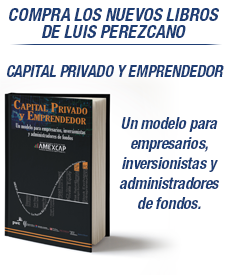
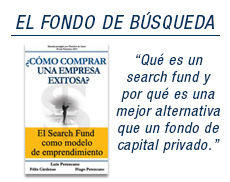
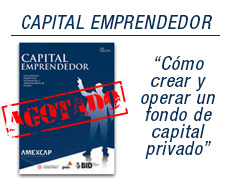
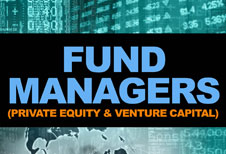
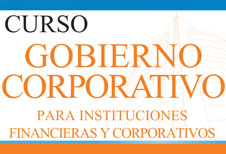
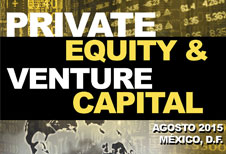


Comentarios